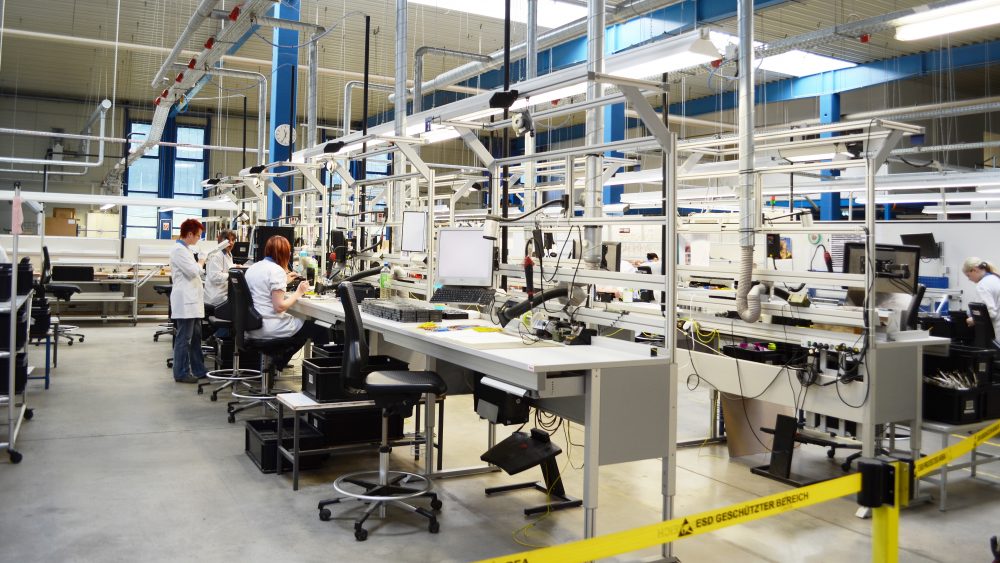Quality management can be a big problem when manufacturing electronic components. All the various parts have to work perfectly over the long term, particularly in critical areas such as power supply. If employees are to make sure products do exactly what they’re supposed to, they need the ideal working environment.
Of course, one aspect of creating an optimum working environment is to ensure production personnel are working with error-free components. That might sound obvious, but it’s a critical factor when handling electronic components, which can be damaged by an electrostatic discharge (ESD) before they even reach the assembly stage.

The invisible danger
An ESD is problematic for two reasons: Firstly, if a production environment has not been specially adapted, there is a whole range of conductive materials that could trigger an ESD. These materials could be on the work bench itself, or the transport trolley used to fetch individual parts from storage. If employees are not using special equipment, they themselves can trigger an ESD when they come into contact with a part. The second reason is that an ESD is practically invisible. Discharges of even just 100 V can be disastrous – and that is well below the level that humans can sense. What’s more, the damage itself is invisible to the naked eye and will therefore go unnoticed, unless it causes the immediate and total failure of the component.

Solutions for ESD protection
As a premium electronics manufacturer and specialist in energy management, Bachmann GmbH & Co. KG had to find the best way to adapt its production process sequence to protect against ESDs. Every workstation also had to be designed so that personnel could complete their production steps in an ergonomic posture and without wasting time and energy on unnecessary reaching movements. You can find out in a detailed user report how Bachmann and item implemented a comprehensive concept for an entire production hall and how personnel benefited directly from that concept.


